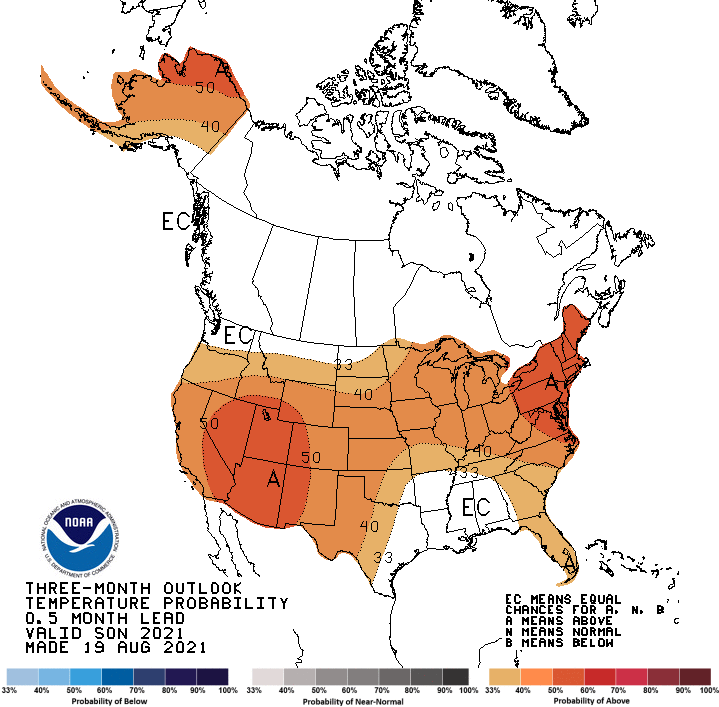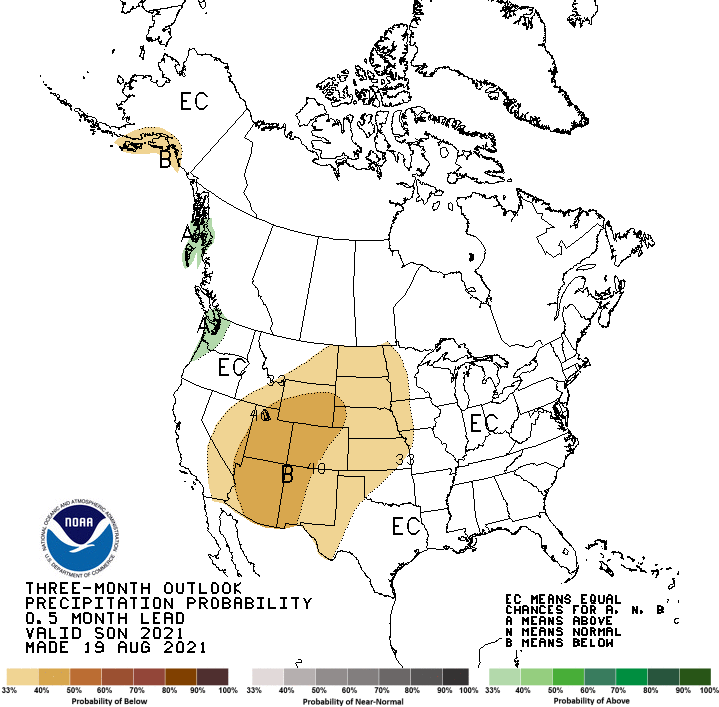Meteorological Summer (June, July and August ) of 2021 started out very warm and dry with several high temperature records being set across the state through the first half of June, including June 16th when the temperature topped out at 100 degrees in Colorado Springs. This marks only the 10th time on record in which the temperature reached 100 degrees or greater in Colorado Springs. The second half of June was cooler and stormier, as several weather systems and cold fronts moved across the region. July saw an influx of subtropical moisture across the Rockies, with bouts of the monsoonal moisture bringing periods of widespread precipitation to the region, especially areas over and near the higher terrain. These slow moving storms brought copious amounts of precipitation and episodes of flash flooding, especially across the area burn scars. August saw upper level high pressure parked across western portions of area for much of the month, keeping drier west to northwest flow in place and limited the amount of subtropical moisture moving into the region. This was especially true for eastern portions of Colorado, where very warm and dry weather, along with smoky and hazy conditions (from Northwestern US wildfires), was the rule for much of August. For the summer of 2021 as a whole, above to well above normal temperatures were experienced across south central and southeast Colorado, save for a few pockets of at to slightly below normal temperatures across the southeast plains. As for precipitation, generally near normal to above normal precipitation was recorded across western portions of the area, while generally below normal precipitation was experienced across eastern portions of the area.
The following graphics depict seasonal temperature and precipitation departures from normal across the state for the summer season.
.png) |
.png) |
The preliminary average temperature for the summer of 2021 in Alamosa was 65.1 degrees. This is 2.1 degrees above normal and makes the summer of 2021 the 2nd warmest summer on record in Alamosa. This is just behind the summer of 2011, when the average summer temperature was 65.3 degrees. Alamosa recorded 2.13 inches of precipitation through the summer of 2021. This is 0.63 inches below normal and makes the summer of 2021 the 35th driest on record in Alamosa. This remains well behind the driest summer, 1970, when only 0.75 inches of precipitation fell in Alamosa.
(click here for a more detailed Summer of 2021 Climate Summary in Alamosa)
The preliminary average temperature for the summer of 2021 in Colorado Springs was 72.0 degrees. This is 2.1 degrees above normal and makes the summer of 2021 the 4th warmest on record in Colorado Springs. This is just behind the summers of 2012, 2011 and 2020 with average summer temperatures of 73.3 degrees, 73.2 degrees and 72.6 degrees, respectively. Colorado Springs recorded 5.61 inches of precipitation through the summer. This is 2.74 inches below normal and makes the summer of 2021the 41st driest summer on record in Colorado Springs. This remains well behind the driest summer, 1939, when only 2.47 inches of precipitation was recorded in Colorado Springs.
(click here for a more detailed Summer of 2021 Climate Summary in Colorado Springs)
The preliminary average temperature for the summer of 2021 in Pueblo was 75.7 degrees. This is 1.1 degrees above normal and makes the summer of 2021 tied with the summers of 1963 and 1969 as the 13th warmest on record in Pueblo. This remains well behind the warmest summer, 1970, when the average summer temperature was 77.7 degrees. Pueblo recorded 6.88 inches of precipitation through the summer. This is 1.60 inches above normal and makes the summer of 2021 the 23rd wettest on record in Pueblo. This remains well behind the wettest summer, 1921, when 14.64 inches of precipitation fell in Pueblo.
(click here for a more detailed Summer of 2021 Climate Summary in Pueblo)
Below is the Climate Prediction Center's (CPC) temperature and precipitation outlook for the Fall of 2021 (September, October and November) which indicates better chances of above normal temperatures and below normal precipitation across south central and southeast Colorado.
 |
 |